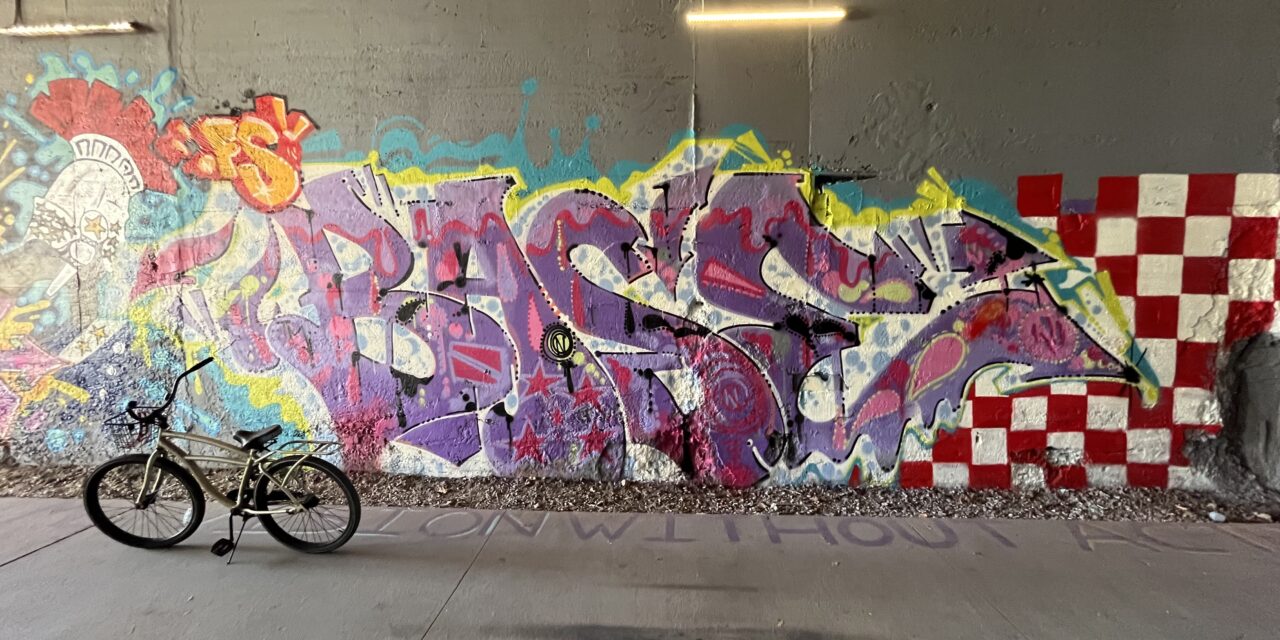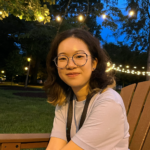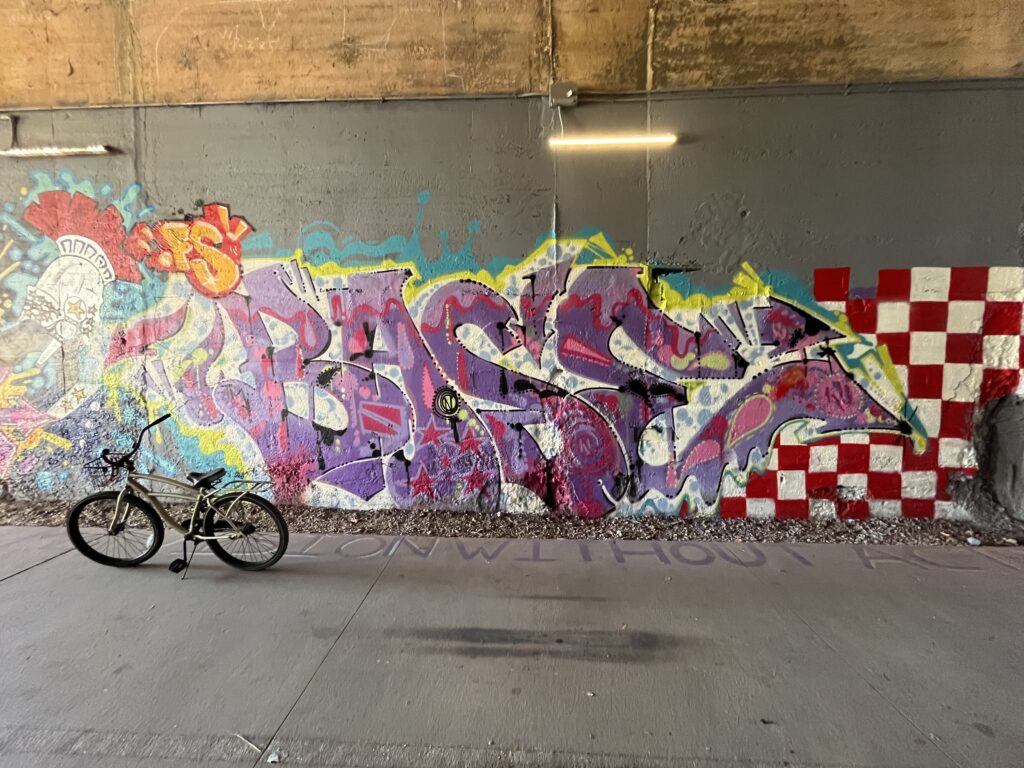
Style writing colors the streets of Atlanta neighborhoods like Cabbagetown, Inman Park and Midtown. Such art pieces are prominent on the walls of the Krog Street Tunnel and along the Atlanta BeltLine. The mixed writing styles and colors catch the eyes of pedestrians and drivers as they pass by, highlighting their presence in modernized areas.
Style writing, most commonly known as graffiti, has become an increasingly prominent subculture in Atlanta over the past 40 years. Street artists host exhibitions with the Atlanta BeltLine, such as “ATL Jam” and “So So Def Wall,” to celebrate the art in one of its most popular locations within the city: Midtown.
The art form has developed in Atlanta for over 40 years. In the early ’80s, as Atlanta’s hip-hop movement took off, style writing began to grow as well. Atlanta also expanded its transportation network as main MARTA stations like Peachtree and Atlantic stations were built in 1971. This expansion allowed style writing from urban centers like New York, Philadelphia and Los Angeles to make its way to Atlanta, said Mendez, a style writer with Madclout, which is a team of style writing artists in Atlanta. Many young artists, such as The United Kings Crew, Save, Totem and Doctor Dax, moved to Atlanta and established a style writing culture in the city.
According to Melissa Hughes, who has done research on style writing in Atlanta at Georgia State University, style writing is the application of graphic styles, letters, forms and spray paint. Artists use paint materials to write words in different public locations to represent themselves or share their opinions.
Cultural significance
Style writing has become a non-mainstream avenue for underrepresented communities to speak up about identities and ideas not often portrayed in mainstream media. In cities like Los Angeles, style writing thrives among Black and Latino communities as a way to express their underrepresentation in politics.
Atlanta’s style writing culture coincided with the rise of hip-hop. In movies about hip-hop, such as “Wild Style” (1982) and “Beat Street” (1984), viewers can see style writers creating and experimenting with different writing styles. Such visual representations contributed to hip-hop culture as street writing appeared alongside with rappers and break dancers.
Randy Gue, assistant director of collection development and curator of political, cultural and social movements at Emory University’s Stuart A. Rose Manuscript, Archives and Rare Book Library, has helped the University acquire collections of style writing.
“Atlanta is an African American mecca, a hip-hop mecca,” Gue said. “The interesting thing about Atlanta graffiti is to see how [hip-hop and graffiti] intertwine and how those things relate.”
Antar Fierce is a style writing historian and art teacher based in Atlanta. He is the co-founder and chief curator of Steel Wheels, a style writing preservation society. Public transportation has always played a significant role in Atlanta’s style writing culture, Fierce noted. Style writers produce their work on static locations like subway stations walls or under bridges, as well as on movable mediums like trains, allowing their pieces to be seen by many. In Atlanta, style writers often choose to create their artwork on MARTA vehicles so others can view their work throughout the city, Fierce said.
“I live near railroad tracks here in Atlanta … and I see work from all over the country, even from Mexico, come by my place,” Gue said. “That’s who graffiti writers are speaking to — they are speaking to each other — and we happen to be lucky to stumble upon those conversations every now and then in our daily life.”
Although Atlanta is the hub of Georgia style writing, this art style is now reaching other cities in the state, Fierce said.
“When you come in from those outer places, you start to see a little bit more graffiti getting closer to the city, whereas 20 [to] 30 years ago, you didn’t see that,” Fierce said. “I would go out to Carrollton, which is all the way, almost, to Alabama, and there were writers out there, and that was awesome.”
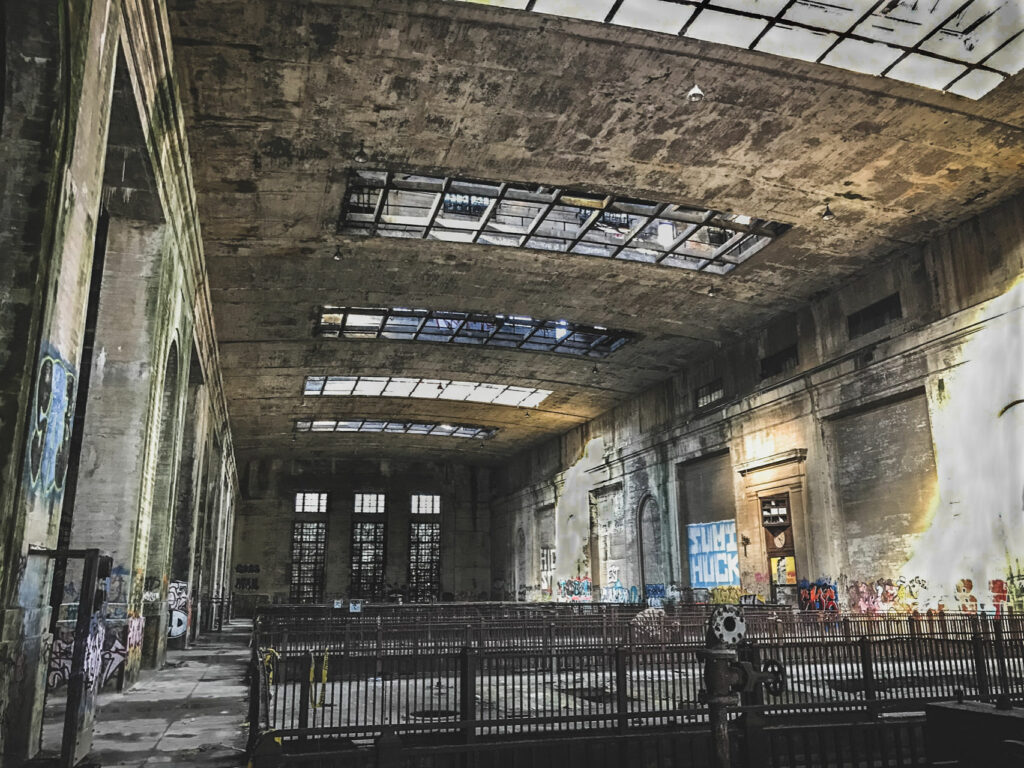
(Courtesy of H.J. Parsons)
Social importance
Style writing in Atlanta has a distinct narrative, which Gue associated with Atlanta’s civil rights history. Civil rights scholarship started with prominent figures like Martin Luther King Jr. and Malcolm X, Gue said, adding that a lot of current civil rights work in Atlanta is happening on the grassroots level. Curtis Jackson, the team lead of Krog Codex, a website that serves as an archive for street writing in Krog Street Tunnel, found that style writers create art for political and social protests. From Jackson’s experience recording style writing in the Krog Street Tunnel, he said that the tunnel is more than a place of art but a space for interactive conversation.
“It’s a community bulletin board,” Jackson said. “It is a place for people to put up their ideas, their passions. It’s also a place for political protest.”
Jackson added that he has seen street writing related to the war in Ukraine, the Israel-Palestine conflict and the Stop Cop City movement. Jackson and his team also saw a large wheat paste collage about women’s rights in the Krog Street Tunnel.
“There were a set of three of them, and they were based on ‘The Handmaid’s Tale,’” Jackson said. “It was clear that it was to remind people, ‘Hey, there’s this election coming up,’ and remind them of the issues … Within a week, it was all torn down. That tells us also that there were people who were against that particular issue.”
Challenges, changes
Style writing was not initially celebrated in government, schools or journalism in Atlanta, Jackson said. Such entities viewed style writing either as individual acts of vandalism or associated with anti-social groups like gangs. Style writers were often chased by police officers and risked their lives to finish a piece, Jackson said. Consequently, they sometimes used pseudonyms for their safety when being interviewed.
“There’s been some very, very trying times, like police, authority figures, trying to apprehend us for being style writers and for applying a medium to a surface that’s deemed illegal,” Mendez said. Since many style writers are young, they face economic challenges such as getting paint materials. Fierce used to experience this struggle.
“You’re a kid, so you can’t afford to buy spray paint,” Fierce said. “You had to either steal it, or you had to get it some other way that was not above board.”
Style writing is not a lucrative career, so many artists have an additional job. Fierce, who has done style writing since 1983, shifted to teaching style writing in Atlanta after his daughter went to school. He got a master’s degree in creative writing from Georgia State University. Now that he has a teaching job, Fierce said it is difficult for him to find the time to do style writing. Fierce recalled that when he came to Atlanta in 1989, style writing was still perceived as vandalism by the public, which posed challenges.
“When I first moved here, I remember seeing ‘wanted’ posters in the train for graffiti writers, which I thought was crazy,” Fierce said. “But I understood it, because it’s illegal, and it’s vandalism, and that’s the narrative that graffiti has had for the longest time.”
However, Fierce said he has noticed that authorities in Atlanta have grown more accepting of style writing over time. He said young people who grew up with street writing are now in leadership roles, and they are changing the discourse and differentiating style writing from vandalism.
“They are in a better position to support it more than they have in the past,” Fierce said.
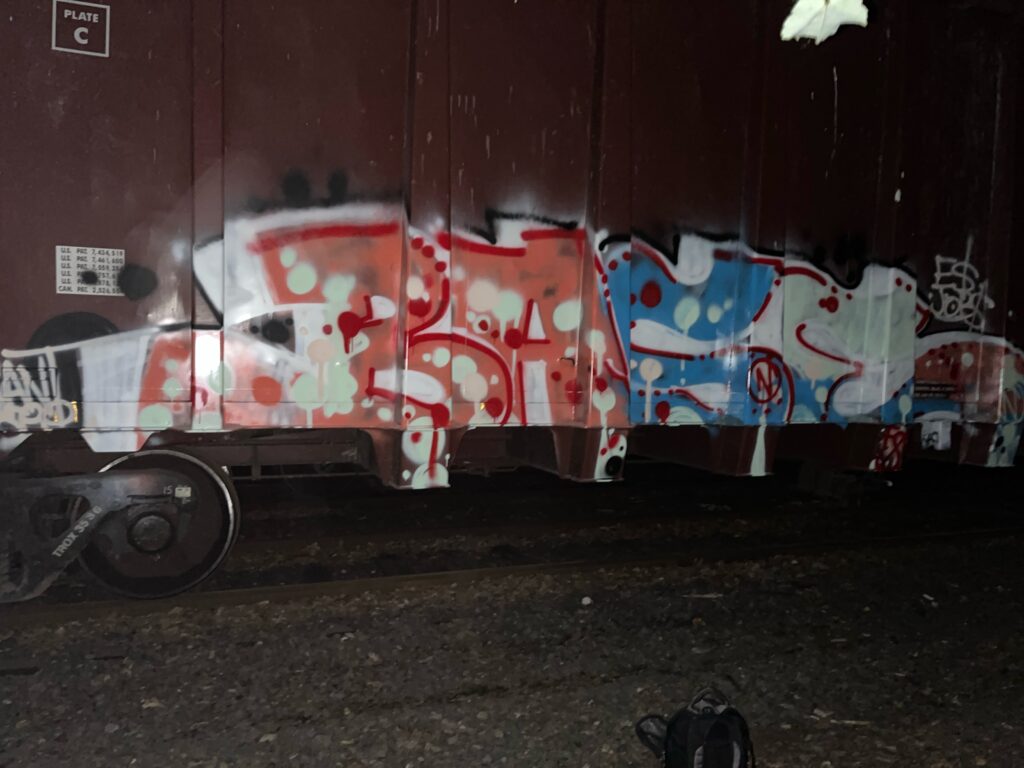
(Courtesy of H.J. Parsons)
Preservation
Style writers often rely on documentarians and historians to record and sustain their works.
“You can spend three hours starting at midnight one night, creating this great masterpiece,” Gue said. “At 6 a.m., some business owner may see it and paint over it, and it’s gone.”
As a result, Gue said photography is crucial for documenting street writers’ work. Photographers often work closely with style writers to track the latest progress of a piece. Photographers may also record changes over time in areas with a lot of street writing art.
“Photography plays a really important role in preserving the artwork because sometimes that is the only evidence that a piece existed,” Gue said.
Emory’s Rose Library has collected photos from photographers who took pictures of style writers’ pieces. In 2022, the library launched “Graffiti: A Library Guide to Aerosol Art,” a collection of style writing presented with photographs from H.J. Parsons and Jack Stewart.
Atlanta’s style writing culture developed along with new construction in the city. Parsons witnessed the redevelopment of old Superfund sites into places like Ponce City Market.
“I didn’t initially start off taking photos,” Parsons said. “I started off as walking down railroad tracks, which are the main parts of the BeltLine now, wandering and doing my research.”
Parsons later took his interest in architecture photography to record these changes. However, documenting style writing is often challenging. Parsons once recorded a style writing project on a train from night until dawn.
“Going in pitch black in the middle of the evening, coming out and then getting the final photograph almost as the sun was rising,” Parsons said. “That was what really made me see and realize how much effort, blood, sweat and tears go into producing results from the sketch onto a surface, an unsanctioned surface.”
Being generalized as vandalism, style writing can be stigmatized and undervalued in the academic field, Gue said. However, scholars now pay more attention to the arts. Gue noted challenges in promoting style writing in academic discussions.
“The other battle I have sometimes — and I’m not saying this often — but it’s convincing people in the academic world that this stuff is important to document,” Gue said. “It is as important to research and teaching as the other materials that we have.”
Gue also noted that social media has helped foster attention to style writing, and the art form is expanding its scale globally.
“All you have to do is go on social media, and you see the graffiti has conquered the world,” Gue said. “I don’t believe that there’s a country in the entire world that doesn’t have this style of graffiti.”
Street writers’ ideology
To Fierce, who has not been professionally trained in art skills, style writing was his introduction to art.
“My education in art began on the subway platforms, and I love art now because of writing,” Fierce said.
After teaching lessons in style writing to young people in Atlanta, Fierce perceived style writing as a medium inspired by kids.
“Kids invented this,” Fierce said. “Kids invented the idea of making art with spray paint — that is undeniable. So, when I do teach with kids 50 years later, it’s almost immediate. Kids get it, they understand it, they enjoy it.”
Fierce considers teaching a way to stay engaged with style writing and pass the art on to younger generations.
“The more people realize the value in it from an artistic standpoint, the more opportunities we’ll have to make sure that the story is recorded, and the story is told and archived,” Fierce said.
Style writing has become a passion in Mendez’s life, and he has created many pieces in Atlanta.
“Even when I’m driving a vehicle for work, in my mind, I’m still thinking of some letters, and I’m thinking of writing and style writing, and I’m thinking of what I can create next,” Mendez said. “The way the visuals you see in the everyday part of your life can be inspiring and also influence your style as far as the way highways turn and curve and the way highways perpendicular and intersect. There’s creative energy and influences.”
Yvette Wang is from Suzhou, China. She is studying linguistics, psychology and sociology. Outside of Wheel, she is a president of photography club and an active member in Lingcircle. In her free time, she likes exploring different genres of music and photography.

